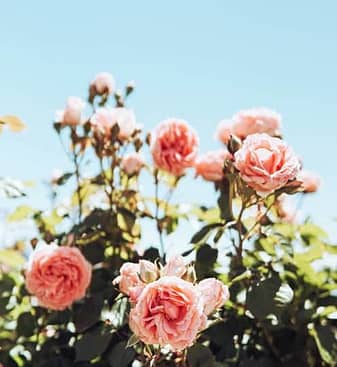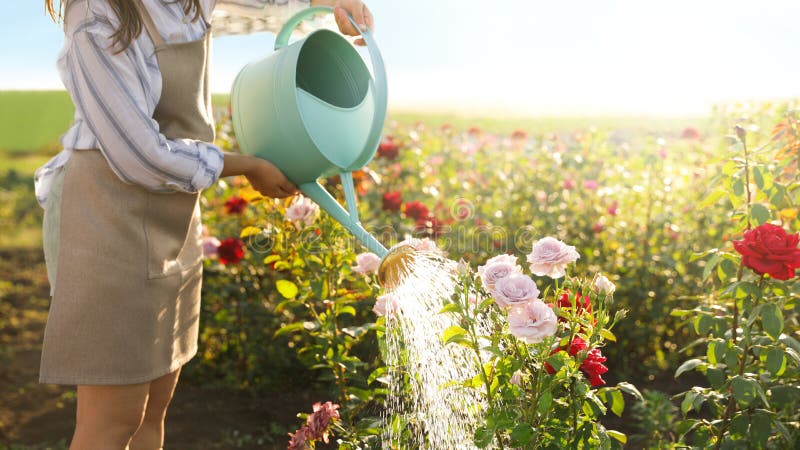HousePlantJoy is supported by our audience. When you purchase through one of our links, we may earn a small affiliate commission. As an Amazon Associate I earn from qualifying purchases. Your cost is not affected.
==================
Embracing the elegance of roses within the confines of your home is a delightful endeavor. Wondering if you can successfully cultivate roses as houseplants? The answer is a resounding yes!Delve into the world of indoor gardening with roses, as we explore the essentials for nurturing these exquisite blooms within the cozy corners of your living space. From choosing the right varieties to mastering the art of care, let’s unravel the secrets of cultivating roses as houseplants and bring a touch of floral splendor into your indoor haven.
Roses as Houseplants – Can You Grow Roses Indoors?
Can you grow roses as houseplants? The answer might surprise you. Roses are often gifted to others, making a beautiful indoor plant. However, it would be best to consider providing it with the best conditions possible.
While you might grow other types, the miniature rose remains the most common—obviously, the size factors into consideration for its popularity.
However, other varieties are also gaining popularity. Miniature roses require the highest amount of light. If that is a problem, you may select a species that can thrive even in partial shade. We offer many shade-tolerant varieties in this article. Climbing varieties on a trellis make a dramatic indoor presentation. Miniature climbing species can be grouped in larger containers for a gorgeous display.
“There is simply the rose; it is perfect in every moment of its existence.”
– Ralph Waldo Emerson
Light, Temperature, Humidity
Outdoor roses flourish in the summer sunshine. They also require quite a bit of direct sunlight if placed indoors. They need at least 6 hours of direct sunlight. And that provides a challenge for many homeowners.
Ideally, windows with southern or western exposure work best. Alternatively, you may use a full-spectrum sunlamp to furnish or supplement the natural sunlight.
The temperature needs to be considered, too. The ideal daytime temperature is 70-75°F (21-24°C), and it should remain at about 60°F (15°C) during nighttime. They tolerate a little range outside of these parameters, but not much.
They require good air circulation, which most homes provide. And this helps them resist many diseases.
However, they will not tolerate cold drafts. So you need to plan their location away from air conditioner ducts and doors that open frequently.
Even with perfect indoor temperatures, your roses might need help if your home is arid. To increase the humidity, set the pot on a humidity tray. This is just a tray covered with pebbles and containing water. The pebbles prevent the pot from pulling in too much water and also prevent clogging of the drain holes. This passive humidity boost works day and night to keep your roses happy.
Water and Feeding
Watering must also be carefully managed. You can use the finger test. If the top of the soil feels damp, all is well. But you need to allow the top inch of the soil to dry before watering again. However, keeping the rose from completely drying out between waterings would be best.
During the growing months, use a fertilizer for roses to feed your plants. Most need to be applied at least once a month.
Remove each flower as soon as it is done blooming. This encourages more blooms to appear and keeps the plant clean. Also, remove any yellow or brown leaves that appear.
It would be best if you trimmed your roses periodically. Cut each cane back to just above the last leaf with five leaflets. This encourages flowering and new growth.
Indoor roses perform best when repotted once a year. Use a fertilizer-rich potting mix that drains well. Consider the pot size, too. You may need to move your plants to larger pots during the annual repotting.
“I’d rather have roses on my table than diamonds on my neck.”
– Emma Goldman
Repotting Your Rose Houseplant
Indoor roses perform best when repotted once a year. Use a fertilizer-rich potting mix that drains well. Consider the pot size, too. You may need to move your plants to larger pots during the annual repotting.
Starting new roses as houseplants
Planting indoor roses in winter, such as January or February. During winter, the plants are dormant.
It would be best to have a deep container approximately as wide as the plant’s canopy. Your pot needs good drainage, usually through the bottom drainage holes.
Choose a soil mix that provides good drainage and contains nutrients. Most potting soil mixes will work if they have a neutral pH, but some growers use peat soil for its drainage. You may use your mix of regular potting soil blended with perlite or vermiculite. Use two parts soil to 1 part perlite. This allows for the excellent drainage necessary.
Your new plants require the same temperature, humidity, and light as the established ones. However, they may be a little less resistant to changes.
Varieties to Consider
With so many rose fanciers, the available varieties for growing both indoors and outdoors continue to grow. One list we found for color varieties of miniature roses was by Stan V. Griep.
He suggests:
- Dr. KC Chan (yellow)
- Salute (red)
- Ivory Palace (white)
- Autumn Splendor (yellow and red blend)
- Arcanum (white with red kissed edges)
- Winter Magic (light lavender and very fragrant)
- Coffee Bean (dark russet)
- Sequoia Gold (yellow)
“Just remember, during the winter, far beneath the bitter snow, that there’s a seed that with the sun’s love in the spring becomes a rose.” – Bette Midler.Houseplants as
Pest and Disease Management, and Winter Care for Roses as Houseplants
Ah, the joy of having roses bloom indoors! Yet, like any prized possession, your indoor rose garden requires some tender loving care, especially when it comes to dealing with potential pests and diseases.
Pest Patrol
Keep a watchful eye on your roses. Common indoor pests include aphids, spider mites, and scale insects. If you spot these little troublemakers, gently wipe them off with a damp cloth or treat your roses with insecticidal soap. Remember, a vigilant eye can often prevent a full-blown infestation.
Disease Defense
Even the most exquisite roses can fall prey to diseases like powdery mildew or black spot. To keep your houseplant roses in top shape, ensure good air circulation, maintain optimal humidity levels, and choose disease-resistant varieties. If diseases persist, consider fungicidal treatments, following the instructions carefully.
Winter Wisdom
As winter blankets the world, your indoor roses take a well-deserved rest. During their dormancy period in January or February, keep the watering to a minimum. Prune lightly to shape and remove dead or unhealthy growth. Place your roses away from drafts and cold spots, providing a cozy haven for them to rejuvenate.
Winter Watering Whims
While your roses rest, they still need a sip now and then. Water sparingly, ensuring the soil remains slightly moist, not bone dry. Winter care is all about balance, offering a gentle touch to sustain your roses through their hibernation.
Remember, roses as houseplants are resilient beauties, but a bit of proactive care goes a long way. Enjoy the vibrant blooms and the satisfaction of nurturing your indoor rose haven.
Blooming Success with Roses as Houseplants
As we bid farewell to this journey through the vibrant realm of indoor rose gardening, remember that cultivating roses as houseplants is not just an art—it’s a gratifying experience. Your dedication to providing the right light, the careful dance of watering, and the occasional pruning will reward you with blossoms that breathe life into your living space.
So, whether you’ve chosen the classic charm of miniature roses or the dramatic allure of climbing varieties, nurturing these floral companions within your home is a testament to your green thumb prowess. Embrace the timeless beauty of roses, transforming your indoor haven into a fragrant oasis.
In the symphony of indoor gardening, roses play a leading role, their petals weaving stories of care and attention. So, let your home resonate with the enduring beauty of roses as houseplants, a testament to nature’s perfection flourishing within the comfort of your living space. May your indoor garden be forever adorned with the elegance and grace that only roses can bring. Happy gardening!
Frequently Asked Questions
Can I grow any type of rose indoors?
Absolutely! While miniature roses are popular for their size and adaptability, various rose varieties can thrive indoors. Consider factors like light availability and space when choosing the perfect rose for your indoor garden. Climbing varieties on a trellis can make a striking statement indoors.
How do I deal with pests on my indoor roses?
Vigilance is key! Keep an eye out for common pests like aphids and spider mites. Gently wipe them off with a damp cloth, or opt for insecticidal soap for a natural remedy. Regularly inspecting your roses ensures you catch potential issues early, keeping your indoor garden pest-free.
Is winter care essential for indoor roses?
Absolutely! Indoor roses experience a dormant period during winter. Limit watering, prune lightly, and ensure a cozy spot away from drafts. Winter care sets the stage for robust blooms when the growing season returns. It’s a vital step in nurturing healthy and resilient houseplant roses.
Connect with Blooms and Buddies! ??
Ready for more rose-filled joy? Dive into our vibrant community on social media! ?
? Facebook: Join the conversation at HouseplantJoyBlog.
? Instagram: Explore blooms and beauty at HouseplantJoy20.
? Pinterest: Pin your plant dreams with us at HouseplantJoy.
? Twitter: Tweet along with fellow plant enthusiasts at HouseplantJoy.
? TikTok: Dance into the joy of houseplants at HouseplantJoy.
Discover engaging content, insightful product reviews, and a community passionate about roses and all things houseplants. Your daily dose of floral delight awaits! ? #HouseplantJoy #RoseLovers ??










